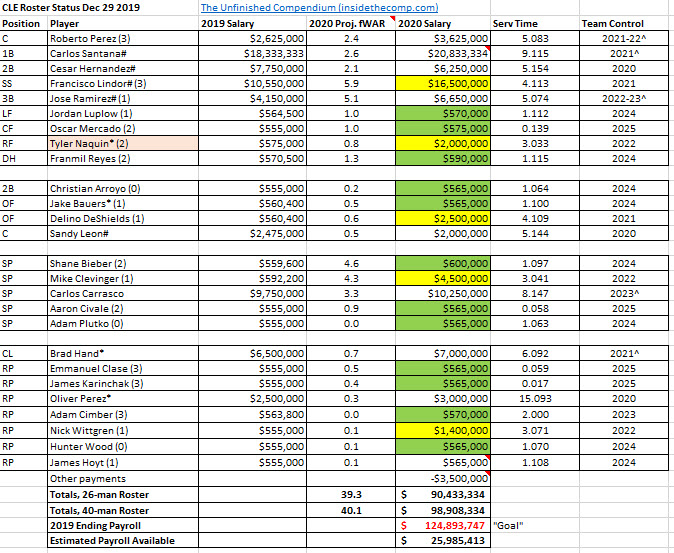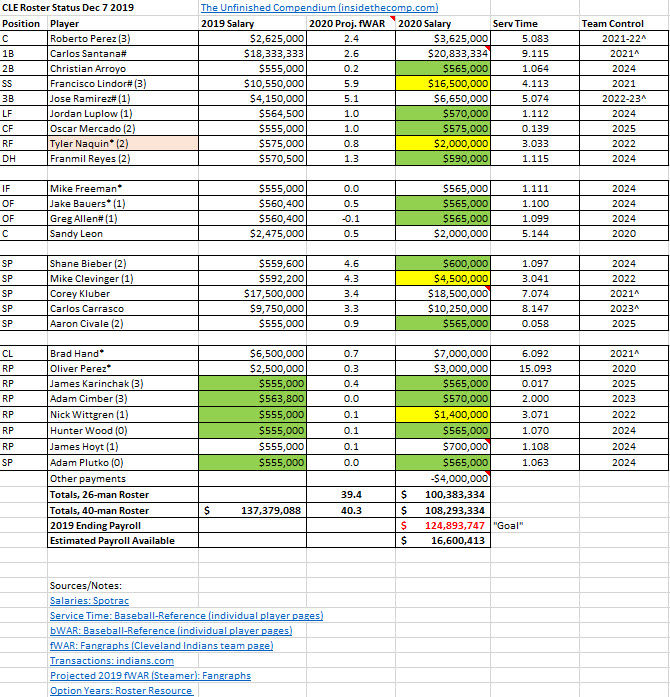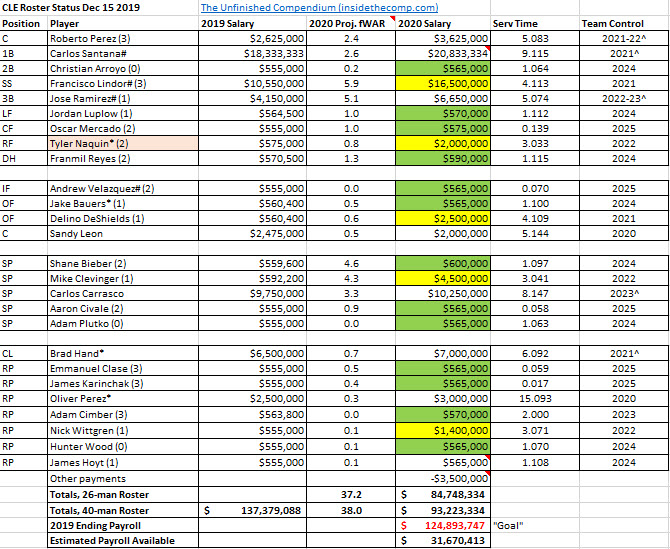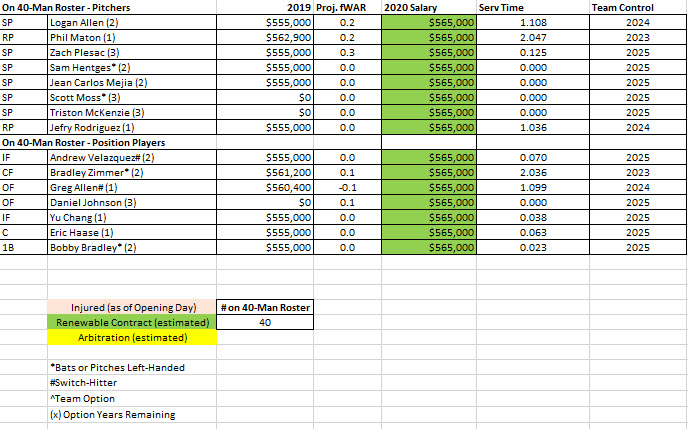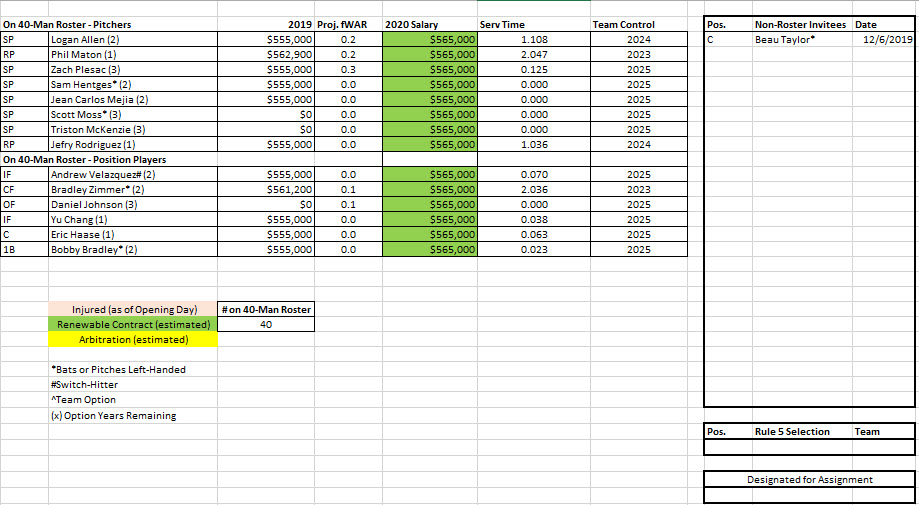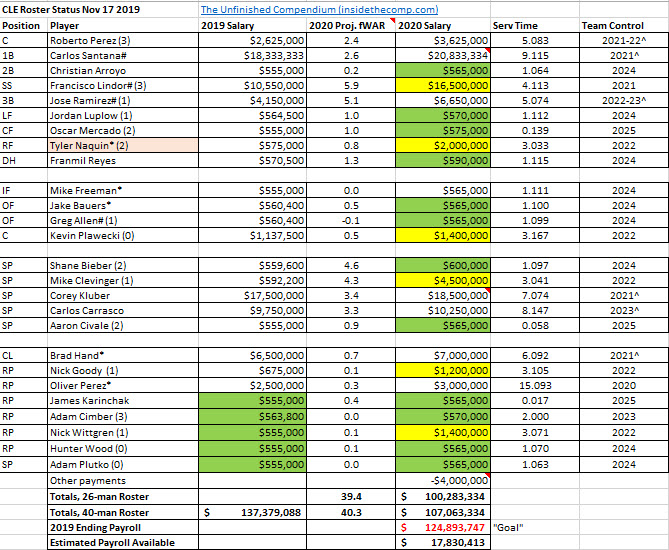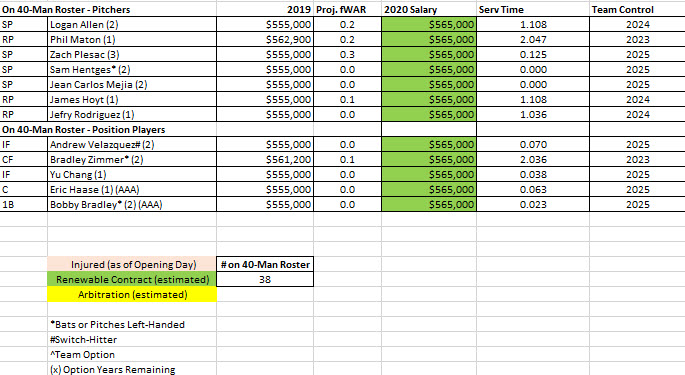Background
As of February 27, there are no comments on any cleveland.com (the web home of The Cleveland Plain Dealer) article, ending a feature that’s been there for at least 20 years. It may surprise you to hear this, but I view this as a horrible move for both the site itself and Northeast Ohio readers.
Before I get into any further commentary, here’s how Chris Quinn, editor of cleveland.com, justified the move (emphasis added):
In cleveland.com’s 20-plus year history, comments have been our biggest flashpoint. Screening comments for personal attacks, profanity or off-topic remarks has become an increasing drain on newsroom resources. Despite the invested time, money and effort, we have failed to dampen pervasive meanness. It’s such a shame. We genuinely wanted the platform to work, because people have so few places to meet others with different viewpoints who want to discuss the topics we cover. As a result, beginning Thursday, we will eliminate the ability to freely comment on every story on cleveland.com and will remove comments from old posts. We want our site to contribute to the greater good. It’s why we’ve cut way back on using mug shots that perpetuate racial stereotypes. It’s why we have been a leader with our Right to be Forgotten policy, in which we remove names from dated stories about embarrassing things people have done. Not hosting a place where a tiny number of people spew caustic nonsense is our latest step to make for a better Greater Cleveland community.
Add this example to a growing number of businesses that clothe what should be a simple cost-savings move behind a robe of piety: despite the other moralistic reasons thrown in, I think that this was done purely to save money by the company that owns cleveland.com, especially given that the archived comments are going away as well. Don’t believe me? Look at this article from another Advance Publications property (al.com) posted on the same day (February 25):
Beginning Thursday, Feb. 27, 2020 at 5 a.m. CST, we’ll eliminate website comments, as have many other sites in our company and as have other news sites over the past decade. Website comments have been replaced by better, more constructive spaces for meaningful engagement. And we want to continue conversations with you in those places.
How about this one, from mlive.com (February 18)…
I’m writing today to announce a significant change to the MLive.com website experience: At 6 a.m. Thursday, Feb. 20, we will permanently close the comment sections on our articles. We’re not doing this lightly. Comment sections have been a fixture at the end of articles on MLive since the early 2000s, and there was a time that they were a vital part of our efforts to engage you in the work we are doing. [snip] But comment sections leave an out-sized impression. Conversations routinely go off-topic, the tone can get uncivil or even nasty, and our moderators (and a vendor our company hires) [emphasis added - Ryan] stay busy around the clock policing the conversations, addressing flagged comments and even going so far as to ban some users.
…and this one, from nj.com (February 25)…
On Thursday morning, NJ.com will remove comments from the site. Archived stories also will have comments eliminated. We understand this will be upsetting to some of the people who read and post comments, but our editors will continue working to find the best ways to engage and hear your voice.
…syracuse.com (February 25)….
On Thursday morning, we are joining many other media outlets in retiring our comments section.
… silive.com (February 17)….
The Advance and SILive will stop hosting comments on our website’s articles Thursday. The move is in response to our readers’ steadily growing preference to engage with our content on social media; the proliferation of other communication options; and an increase in personal-attack comments that required around-the-clock moderation.
…and I could go on. Every Advance Publication that I checked has closed its comments section as well, which looked to be a plugin from a third-party vendor. Perhaps the contract with that vendor was up, and that prompted the move. I should also mention that Advance Publications is the majority shareholder of Reddit, which is going to be one of the places readers are going to go to express their opinions on a news article. In fact, while searching for the various announcements, I came across a new subreddit, r/ Syracuse_Comments, set up explicitly to comment on syracuse.com articles now that you can’t do so on the site itself.
Commentary
I have a special insight into comments sections, as I was the managing editor and later moderator at Let’s Go Tribe, SB Nation’s Indians blog, for over a decade, a platform that grew into what it is today precisely because of the user community. And before that, I spent many hours on various message boards such as the ESPN.com Indians board, so I’ve also seen many examples of what not to do when allowing reader commentary. Those bad experiences on other boards influenced how I moderated Let’s Go Tribe.
So when I read the article explaining why comments were being shut down, I shook my head in disgust. Yes, the cleveland.com comments sections have been a running joke for decades now, but is that the fault of the trolls and bad actors or the people running the site? Let me address the various justifications separately.
Argument 1: Moderating comments was costly in terms of both time and money. This is the one that makes the most sense, so let’s start here. I will readily admit that adequately moderating comments is not a quick or an easy job, but it is possible. Let me walk you through how we did it at LGT:
Not many people commented at Let’s Go Tribe in the beginning, so it was easy to manage. However, once the site began to get some traction (thanks in part, ironically, to the state of the cleveland.com Tribe page), we got the same issues that many other sites have: comment spam, off-topic content (especially politics), name-calling, general trolling (“your team sucks, haha”). So Jay and I put together a list of ground rules; in other words, these were the categories of user comments or actions that would be moderated (original version, 1-25-2006):
1. Political talk. This is a baseball blog, not a political one. Fans who read this blog come from all points in the political spectrum, but have one thing in common: they are Indians fans. That's the community we want to cultivate here at Let's Go Tribe: a group of diverse individuals who love talking to each other about the Indians and baseball. Political debate is not something we want to bring into this community. 2.Personal attacks. In other words, steer clear of "you're an idiot" or "you suck." A good rule of thumb: attack a poster's ideas, not the poster himself/herself. We want this place to be somewhere where people can debate various topics with civility, not a demolition derby. 3.Trolling/flame-baiting. Trolling shouldn't be too much of an issue now that registration is required, but I wish to avoid flame-baiting as well. Posting incendiary content in order to get a reaction out of other posters will not be tolerated. 4. Profanity. Avoid the Seven Dirty Words, and you'll be fine. 5. Snobbery. Users are not required to like Arrested Development — neither the TV show nor the hip hop group — and should not be badgered about it. 6. Comment Spam. This is dumping a bunch of links into a comment in order to boost a site's search engine ranking. First offense: banishment. 7. Sock Puppets. These are users with multiple accounts. This hasn't happened all that often, but we'd like to nip this in the bud before it becomes a bigger problem. If you've forgotten your password, e-mail us and we'll send you a reminder. Don't create a new account. 8. Blatant Site Pimping. Don't miscontrue the title; we have absolutely no problem with users mentioning their sites/blogs here, and in particular posting a FanShot with a link to one of your articles. The larger the Indians blogoshere, the better for all involved. But please do not post content verbatim from your website or blog. Post a proper FanShot link, and you'll get traffic. If you've started a new blog and would like to be added to our Indians Blogroll, please e-mail either of us. Provided the blog (a) is relevant, (b) has original content, and (c) is updated regularly, we'll be happy to include it. 9. Please do not make your first contribution a FanPost. We feel that it is best to start commenting before posting original content, if only to get a better idea as to what this site is about.
Other than the somewhat nebulous term “trolling/flame-baiting”, which makes sense in terms of a baseball site, the rest of the rules are clear and understandable to any reader. We were specific to the point where in most cases the decision to moderate was cut and dry, no matter who was doing the moderation. There were, as always, a few cases that skirted the line (those were the calls that ultimately I had to make), but the line didn’t move. I ended up banning perhaps two or three regular readers over the decade-plus I moderated LGT, which I think is indicative of how clear the rules were. We had tools, even in the infancy of the site, to get rid of troublemakers, especially those who would try to get around banishment.
In contrast, some of the community rules at cleveland.com are broad and mean different things to different people:
(1) Differences of opinion make for great discussion, but please do not abuse other users through name calling or ad hominem attacks. (2) Do not post dehumanizing material. This means content that is racist, obscene, xenophobic, homophobic, misogynistic or bigoted against individuals or groups. Please help the community by flagging such content. (3) Please use common sense. Do not violate anyone's privacy by posting identifying information or encouraging anyone else to do so. Do not encourage violence or criminal activity. (4) Please stay on topic. Posts that criticize moderation or distract from the article's topic by introducing unrelated hot-button topics may be removed. (5) Please be thoughtful. Comments that negatively characterize broad groups of people may be removed. Such assertions, which may feel satisfying to write, are unlikely to change anyone's mind and make it significantly more difficult to have a productive discussion. (6) Ask: Is it true? Is it necessary? Is it kind?
I can now see why it was difficult to moderate the site with these guidelines. Numbers 1, 3, and 4 are straight-forward, but Numbers 2, 5, and 6 make practically any comment eligible for moderation, depending on the point of view of the moderator. In today’s society we are not only communicating with different vocabularies, but are using different definitions of the words that we do share. I think one of the major factors in the failure of modern sites (including social media sites) to moderate content without getting one group or another angry is that the terminology is too broad and open to interpretation. What’s “obscene” or “thoughtful” or an “ism” to one person may not have the same connotation to another.
However, putting together a list of rules is the easy part; it’s the enforcement of them that takes most of the effort. That means consistent and prompt moderation. To get more specific, that means reading (not just scanning for problems) as many comments as you can every single day, not only so you can anticipate any issues but also so you get a sense of the individual commenters as well as much-needed feedback on the original content (more on this in a later post). If you understand the interpersonal dynamics between individual commenters, you will be better able to address potential issues before they flare up into actual moderation (as in deleting a comment or banning a commenter). I’d often defuse a situation in the comments section before I had to delete a comment. Creating a “comments culture” is a slow and at times painful process, but once you get some momentum going the site began to police itself without much need for action from me.
Now, I understand that there’s a difference in scale between moderating a niche sports site and regional news site, both in terms of volume and in terms of content. I addressed political comments (which are usually the most heated in any type of forum) at LGT by simply deleting them, while a decent portion of cleveland.com’s content is purely political in nature, so they couldn’t do that. But even the non-political sections of cleveland.com had issues, so it wasn’t just the type of content.
With a better approach and a different understanding of the relationship between the publisher and the readers, it could have worked out. It seems, based on some references in the cleveland.com article and the comments (which unfortunately were deleted along with the rest of the comment archives), as if all the moderation was the responsibility of one person, with some automated assistance from the third-party comments platform. If instead, for instance, there was a Local News moderator, a Sports moderator, etc, and that moderator interacted with the commenters, being available to answer questions in a transparent way, and meanwhile providing his/her content manager with feedback from the readers, then it could have justified the expense of having those employees on staff. Paul Hoynes, the Indians beat reporter, would regularly interact in the comments section in his articles to answer a question or acknowledge a correction, and that was the type of interaction that should have been the norm in the other sections of the site.
“But,” you might say, “the newspaper/web news industry is contracting, so they just can’t afford to have all those section moderators on staff.” Which I agree with, in the present state of the industry. But comments on cleveland.com have been around in one form or another since at least the turn of the century, well before any appreciable decline had started to become apparent. The comments section has been mismanaged from the beginning; if it had been, it would have been much easier to maintain, as a good commenter culture, once it is established, can often on its own enforce the rules before a moderator even has to act, much like the players in the baseball clubhouse can diffuse a problem before the manager has to intervene.
Argument 2: Only a small number of readers actually commented.
This was a consistent point in almost every one of the announcements, but that’s missing the larger picture. A small number of people will comment on any platform, including well-run ones. There are always going to be way more lurkers than participants, for a number of reasons. But that doesn’t mean there isn’t an interest in the comments section. Let’s Go Tribe is the only comments section I participate in, but I do read the comments (if there is one) on practically every other site I visit. In fact, an active comments section will draw more readers to your site, and more often. Readers may be drawn to a site initially by the articles, but they’ll stick out to read the reactions to the articles. One of the running jokes at LGT was that no one read the articles, and there’s a kernel of truth in there.
Most articles have a specific point of view, whether you are talking about baseball, movies, or politics, and often a comment will take the other point of view in response. Or perhaps it will point out an incorrect fact that a reader should know about, or provide some interesting content on its own. When done correctly, a comments section can be just as valuable to the site as the original article, and all the site has to do is to make it available. I think, as a result of this move, all the Advanced Publishing sites are going to see a much larger drop in traffic than just the small percentage that actually commented.
One thing to keep in mind: those that do take the time and gather the courage to comment are the ones that care the most about that article. Now that may not represent the average opinion, but you can at least learn what a portion of the reader’s opinions are and tailor your future content to take into account the concerns raised, even if only to refute them. Speaking of which….
Argument 3: There are other venues to publicly express your opinion, like Twitter and Facebook
This argument is true on its face. But, if removing on-site comments is truly about saving money, I think that the Advance Publications network will give back those savings because of the lost revenue. You can’t monetize comments that are on other platforms. In other words, Facebook and Twitter are not going to pay cleveland.com for comments left on those platforms. And let’s face it, many people on those social media platforms never click through to the site, instead feeling content to comment solely based on the headline and snippet available on that social media platform. Assuming this site still continues to operate on an ad-based model, the best way to keep the lights on is to keep people viewing your site, and one way to do that is to entice people to come back multiple times to see what the public has to say about an article.
By pushing feedback away from the original site itself, it allows the site owners to better control the messaging. For example, if an opinion piece (and given the state of the media today, what isn’t an opinion piece) is responded to only on Twitter or Facebook or Reddit, only a small fraction of the readers will know about it. It ceases to become anything resembling a “conversation,” with the points quarantined away from any counter-points.
Yes, the traditional letters to the editor and a texting program are going to be used as feedback, but those either depend on the editors allowing them to be published or will never be published at all. Maybe the editors at cleveland.com think this is a feature, not a bug.
(As this post is already getting ridiculously long, I’m going to stop here for now.)

